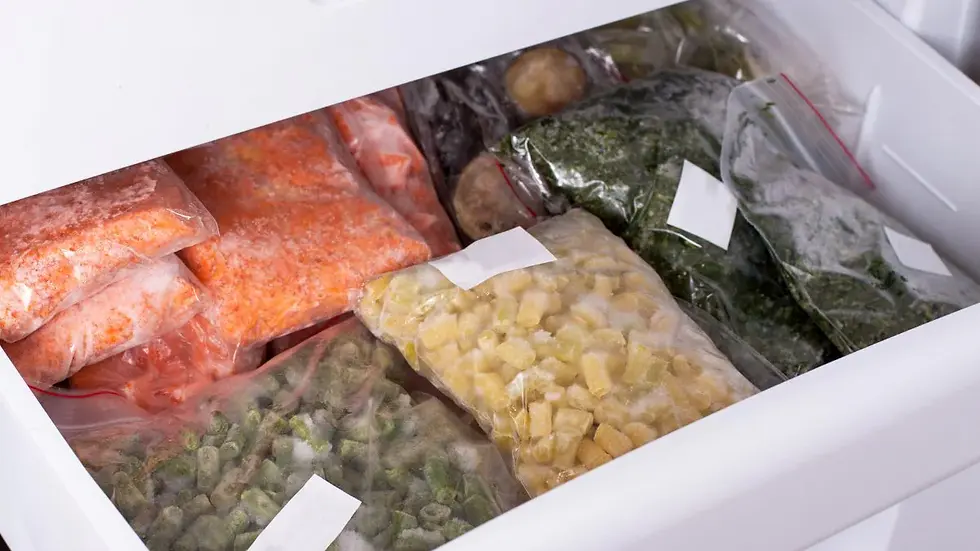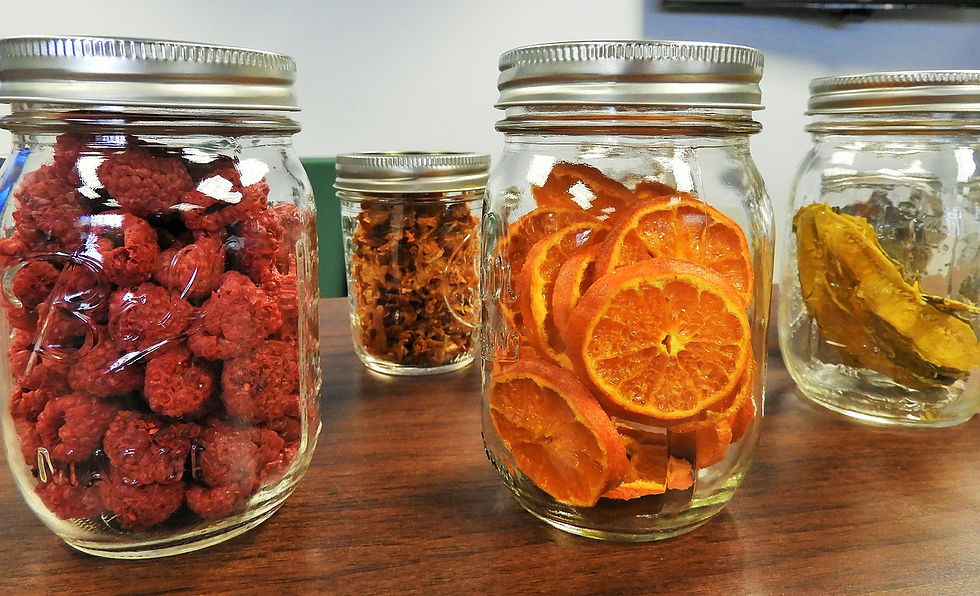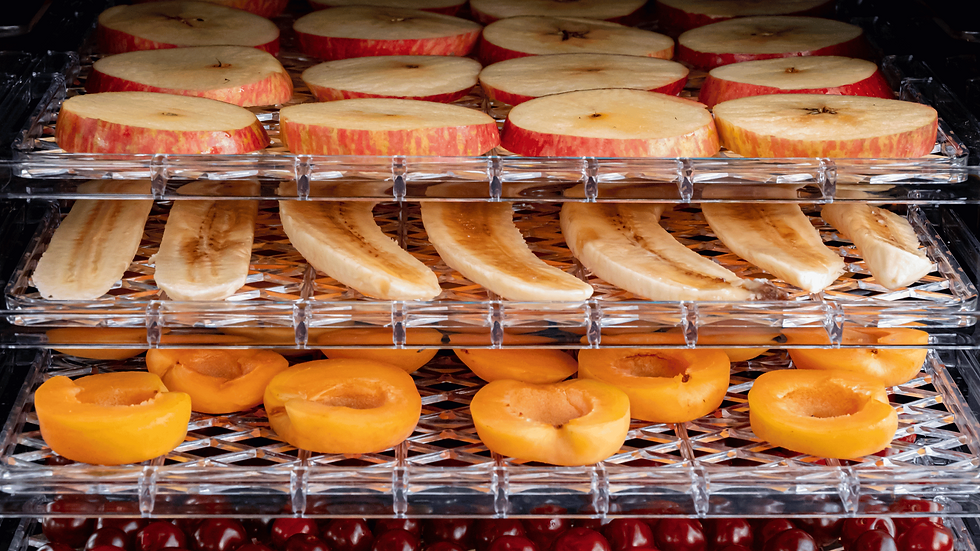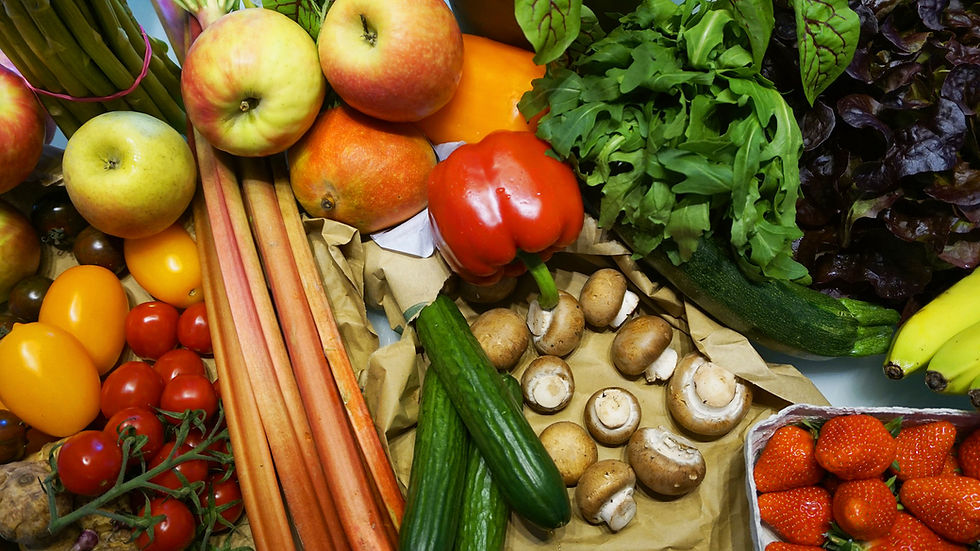You Freeze Dry In A Regular Freezer
- Walid
- Jul 29
- 9 min read
Understanding Freeze Drying in a Regular Freezer
Are you curious about how to freeze dry in a regular freezer? Freeze drying is a fascinating preservation method that removes moisture from food while retaining its flavor and nutritional value. Utilizing a regular freezer for this process can be challenging but feasible with the right approach. Unlike commercial freeze dryers, your standard freezer operates at a higher temperature, which impacts efficiency. Still, learning the ropes of freeze drying in a regular freezer can save money and keep your favorite foods edible for extended periods.

How Freeze Drying Works
Freeze drying involves two main stages: freezing and sublimation. First, the food is frozen to a temperature of -40°F or below. This step is crucial as it converts moisture into ice. The second stage, sublimation, occurs when ice directly transitions to vapor under vacuum conditions. Achieving effective sublimation requires patience, often taking several days in a regular freezer.
Benefits of Freeze Drying
Why consider the freeze dry regular freezer method? Here are some of the main benefits:
Extended shelf life of food.
Preserved nutritional content.
Retained colors and flavors.
Lightweight and portable food storage.
Cost-effective compared to commercial methods.
While the process requires diligence, it presents an affordable option for long-term food preservation. Below is a simple comparison of freeze drying methods:
Method | Cost | Time Required |
Commercial Freeze Dryer | High | Days |
Regular Freezer | Low | Days to Weeks |
Tips for Success
To optimize your freeze dry regular freezer experience, consider these tips:
Use small portions for faster freezing.
Vacuum seal foods to enhance preservation.
Monitor temperature closely.
Rotate food to ensure even drying.
“While it may take longer, freeze drying in a regular freezer offers an effective way to preserve food at home.”
Want to explore more? Head over to our homepage and see what we have to offer!
Unlocking the Advantages of a Freeze Dry Regular Freezer
The freeze dry regular freezer offers numerous benefits that cater to both individuals and businesses aiming to extend the shelf life of various products. By utilizing this innovative method, users can retain the flavor, nutrients, and structure of food items far better than traditional preservation methods. This is particularly important for those who want to maintain the quality of their food for long periods without relying on preservatives.

Enhancing Shelf Life
A significant advantage of using a freeze dry regular freezer is its ability to enhance the shelf life of delicacies. By removing moisture, these freezers inhibit the growth of bacteria and mold, keeping food items safe for consumption over extended durations. This feature is invaluable for outdoor enthusiasts and emergency preparedness, where supplies must remain edible without refrigeration for long terms.
Quality Retention
Another remarkable benefit is the quality retention of freeze-dried products. Foods processed in a freeze dry regular freezer maintain their original texture and flavor, making them more appealing than conventional dried items. This means that whether you’re an astronaut, a camper, or someone simply wanting to stock up, the taste remains excellent after rehydration.
Longer shelf life
Retention of nutritional value
Space-saving storage solutions
Product Type | Shelf Life (Years) |
Vegetables | 10-25 |
Fruits | 25+ |
Meals | 7-10 |
Convenience for Users
The ease of reconstitution makes the freeze dry regular freezer products incredibly convenient. With just a little water, you can bring any meal back to life with its original taste and texture intact. This factor is especially loved by busy families and nutrition-conscious individuals.
Easy preparation
Minimal cooking time
Portable for travel
Discover the endless possibilities for food preservation—experience the quality and longevity of freeze-dried products with a freeze dry regular freezer!
This is just one of many great blogs we have—explore more right here.
How to Freeze Dry Food at Home
Freeze drying food at home can be an exciting venture that helps preserve nutrients and flavors. While most believe a special machine is required, you can achieve this with your regular freezer. The key process involves freezing and then removing moisture, allowing you to enjoy delicious food long after it’s prepared.

Gather Your Supplies
Before starting, ensure you have all necessary supplies. You’ll need fresh foods like fruits, vegetables, and herbs. Additionally, use airtight containers or vacuum-sealed bags to store your freeze-dried items, ensuring they remain protected from moisture and air, further enhancing the freshness of your freeze dried regular freezer process.
Preparation Steps
First, wash and chop your food into uniform pieces for even drying. Spread them out on a baking sheet, ensuring none overlap to allow proper airflow during the freeze drying process. Place the tray in your regular freezer. The freezing stage is crucial, so be patient and allow sufficient time for the food to reach a solid state before proceeding to the drying stage.
Wash and chop food.
Spread pieces on a baking sheet.
Freeze the food completely.
Store in airtight conditions.
The next crucial step involves removing moisture from the frozen food. Generally, you can leave the food in a very low-temperature environment for a few days, effectively mimicking the freeze dry regular freezer method.
Food Type | Freezing Time (Hours) | Drying Time (Days) |
Fruits | 24 | 2-3 |
Vegetables | 24 | 3-4 |
Storing Your Freeze-Dried Food
Once your food is freeze-dried, place it in sealed bags to prevent moisture from re-entering. Ideal storage will enhance the longevity and quality of your ingredients. Remember, skills improve with practice, so don’t hesitate to try different foods!
Use vacuum-sealed bags.
Avoid sunlight exposure.
Label your containers.
Using a regular freezer for freeze drying can save both time and money while making healthy food available year-round!
Want to make your cooking healthier? Try our dehydrated cabbage for quick cooking and retaining nutrients.
Common Foods That Freeze Well in Freezers
When considering how to effectively use your freezer, knowing which foods can freeze well is essential. Freezing preserves the freshness of items, making them convenient for later use. While many people think about freeze-drying techniques, a regular freezer can also be an effective method for saving various foods. Understanding the best options can help you maintain a well-stocked kitchen without waste.
Fruits and Vegetables
Fruits and vegetables can often be frozen without significant loss of texture or flavor. Proper preparation is key; wash, chop, and store them in airtight containers to prevent freezer burn. Most vegetables do require blanching before freezing, while fruits can be frozen directly or with a sprinkle of sugar to preserve their sweetness.
Meats and Seafood
Meats, like chicken breast and ground beef, are great options for freezing, retaining their quality if wrapped tightly. Seafood should also be frozen soon after purchase, ensuring it stays fresh for future meals. Both can be stored for longer periods if handled and thawed correctly.
Berries
Carrots
Chicken
Salmon
Zucchini
Remember to label your containers with dates to keep track of freshness. For an organized view, here's a table comparing various food items and their freezer life:
Food Item | Freezer Life (months) |
Berries | 6-12 |
Chicken | 9 |
Carrots | 10-12 |
Storing Tips
To maximize efficiency in a regular freezer, consider foods that freeze surprisingly well. Moreover, always use airtight containers or freezer bags to prevent freezer burn, ensuring you maintain the quality of your food items.
Stews and Soups
Rice and Grains
Bread
Properly freezing food can maintain its nutrients and flavor for months.
Essential Tools for Freeze Drying in Regular Freezers
If you want to freeze dry using a regular freezer, it's important to equip yourself with the right tools to maximize results. Freeze drying food preserves its nutrients and flavor while extending shelf life, making it a great option for long-term storage. Understanding how to effectively freeze dry in a regular freezer can save you money and enhance your food preservation techniques.

Basic Requirements
To successfully freeze dry in a regular freezer, you need a few essential items. First, ensure you have an airtight container or vacuum-seal bags to store the foods you intend to freeze dry. These containers will maintain the quality and prevent moisture absorption during the process. Additionally, a thermometer to monitor temperature settings can be very useful.
Tools to Enhance the Process
With the right tools, the freeze drying process becomes easier and more efficient. A food dehydrator can be an excellent complement to the freezing process, allowing moisture removal before storage. An ice cream maker also aids in creating a smoother consistency for fruits and vegetables before they are freeze-dried.
Airtight containers or vacuum-seal bags
Food dehydrator
Ice cream maker
Keep in mind that maintaining the right temperature is crucial in a freeze dry regular freezer setup. Here's a quick reference table to help you understand the ideal temperatures for various foods.
Food Type | Freezer Temperature (°F) |
Fruits | -10 to -20 |
Vegetables | -5 to -15 |
Meats | 0 to -10 |
Final Tips
To get the best results when using a freeze dry regular freezer, ensure the food is cut into small, uniform pieces for even drying. Additionally, try to limit the number of times you open the freezer door to maintain a consistent temperature. This will help food retain its quality during the freeze drying process.
This is just one of many great blogs we have—explore more right here.
Cut food into uniform pieces
Avoid frequent exposure to warm air
“With the right tools and a little patience, you can effectively freeze dry food at home!”
Tips for Maximizing Freeze Drying Efficiency
If you're looking to freeze dry regular freezer contents efficiently, there's no better way than employing a few strategic techniques. Understanding the principles of freeze drying will help you make the most of your regular freezer and storage space. Proper preparation, timing, and temperature management are crucial to ensure maximum efficiency during the freeze drying process.
Preparation Techniques
Before placing your items in the regular freezer, it's essential to prepare them appropriately. Slice fruits and vegetables into smaller pieces to increase surface area, which aids in quicker drying. Make sure everything is clean and dry to prevent ice crystals from forming, as this can compromise the freeze drying process. Additionally, consider blanching vegetables to retain color and nutrients.
Monitoring Conditions
It is vital to monitor the conditions in your regular freezer while freeze drying. Ensure the temperature is set adequately low to allow for optimal freezing. A consistent vacuum level will also enhance the efficiency of the freeze drying process.
Use clean, dry containers for your items.
Group similar items together for consistent results.
Label your containers for easy organization.
Item | Preparation Time | Freeze Drying Time |
Fruits | 10-15 minutes | 24-36 hours |
Vegetables | 5-10 minutes | 20-30 hours |
Final Tips
In addition, regularly check your progress to determine if adjustments are necessary for optimal results.
Keep a log of your freeze drying experiments.
Experiment with different freeze drying times.
Learn from any mistakes to improve future batches.
“Maximizing efficiency in freeze drying is all about preparation and monitoring.”
Comparing Freeze Drying and Traditional Freezing Methods
When it comes to preserving food, the choice between freeze drying and using a regular freezer can significantly impact quality, taste, and shelf-life. The method of freeze dry regular freezer utilizes various techniques to retain the food's nutritional value and extend its longevity. Freeze drying removes moisture effectively, resulting in lightweight, shelf-stable products that can be easily rehydrated, unlike the traditional freezer, which can lead to freezer burn over time.
Understanding Freeze Drying
Freeze drying involves freezing the food first and then placing it in a vacuum chamber, where sublimation occurs. This process eliminates water while retaining the food's structure, flavor, and nutritional content. This allows items to stay fresh for years without requiring any artificial preservatives, offering a more healthy alternative. Compared to traditional freezing, this technique minimizes nutrient loss and preserves the original essence of the food.
Limitations of Traditional Freezing
Traditional freezing can be convenient, but it comes with its drawbacks. Foods stored in a regular freezer often suffer from ice crystals forming, which can alter texture and diminish taste. Moreover, if not packaged correctly, food can suffer from freezer burn, negatively impacting both flavor and safety. Understanding the differences between these methods can guide consumers in making the best culinary choices for long-term food storage.
Nutritional Value Retention
Texture and Flavor Quality
Storage Lifespan
Preparation Ease
Energy Consumption
Ultimately, selecting between freeze drying and traditional freezing hinges on personal needs and preferences. A detailed comparison can help guide individuals towards more effective food preservation methods.
Method | Nutrient Retention | Storage Duration | Texture |
Freeze Drying | High | Years | Crispy |
Traditional Freezing | Moderate | Months | Variable |
A Quick Look at Advantages
When considering the advantages, freeze drying outshines traditional freezing in several areas:
Longer shelf life
Lesser nutrient loss
Better flavor retention
Lightweight storage
Freeze dry regular freezer options ensure you're not just saving food, but you're also enhancing its quality for future meals.
Frequently Asked Questions about Freeze Drying
If you're pondering the practicality of freeze drying versus traditional preservation methods, including how to freeze dry regular freezer contents, you're not alone. There are countless questions surrounding the freeze-drying process that can help clarify its advantages, functionalities, and limitations. Understanding these aspects can empower your decision-making when it comes to food preservation and storage methods.
Can I freeze dry at home?
Yes, you can indeed freeze dry at home! While commercial freeze-drying machines offer the best efficiency, smaller versions designed for home use are available. However, using a regular freezer isn't quite sufficient for freeze drying. A process called sublimation is vital, which requires controlled vacuum and low temperatures that a typical freezer cannot provide.
What foods are best for freeze drying?
Fruits, vegetables, and cooked meals are among the best options for freeze drying. Freeze dry regular freezer food like strawberries or soups can significantly extend their shelf life while preserving flavor and nutrients. However, dairy and high-fat foods generally do not freeze dry well.
Vegetables like peas and carrots
Fruits such as apples and blueberries
Prepared meals, including stews and casseroles
To assist further, explore the table below detailing various food types suitable for freeze drying:
Food Type | Freeze Dry Success |
Fruits | Excellent |
Vegetables | Great |
Dairy | Poor |
What advantages does freeze drying offer?
Choosing to freeze dry can enable long-term food storage while retaining nutrient value and flavor. Long shelf life is another significant advantage, allowing foods to last for years. You can easily enjoy the benefits of freeze dry regular freezer options, especially when preparing for emergencies or camping trips.
Long shelf life
Retains taste and nutrition
Lightweight and compact storage
“Freeze drying is a game-changer for food preservation, simplifying long-term storage dramatically.”




Comments